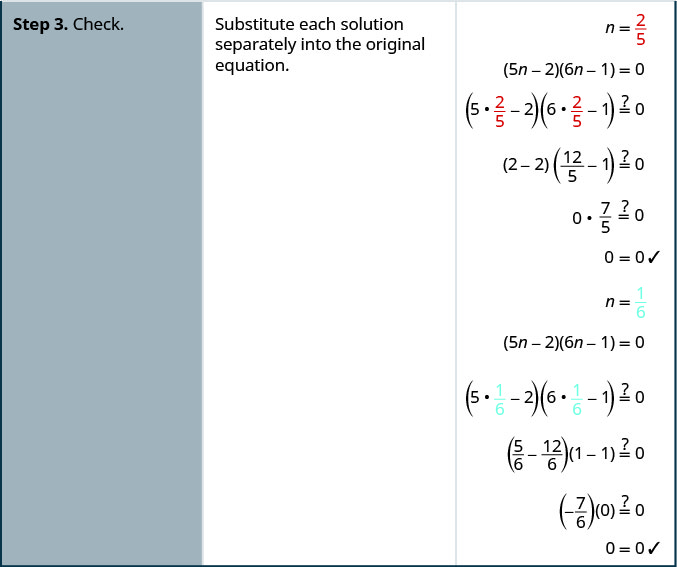

Before you get started, take this readiness quiz.
We have spent considerable time learning how to factor polynomials. We will now look at polynomial equations and solve them using factoring, if possible.
A polynomial equation is an equation that contains a polynomial expression. The degree of the polynomial equation is the degree of the polynomial.
A polynomial equation is an equation that contains a polynomial expression.
The degree of the polynomial equation is the degree of the polynomial.
We have already solved polynomial equations of degree one. Polynomial equations of degree one are linear equations are of the form \(ax+b=c\).
We are now going to solve polynomial equations of degree two. A polynomial equation of degree two is called a quadratic equation. Listed below are some examples of quadratic equations:
\[x^2+5x+6=0 \qquad 3y^2+4y=10 \qquad 64u^2−81=0 \qquad n(n+1)=42 \nonumber\]
The last equation doesn’t appear to have the variable squared, but when we simplify the expression on the left we will get \(n^2+n\).
The general form of a quadratic equation is \(ax^2+bx+c=0\), with \(a\neq 0\). (If \(a=0\), then \(0·x^2=0\) and we are left with no quadratic term.)
An equation of the form \(ax^2+bx+c=0\) is called a quadratic equation.
To solve quadratic equations we need methods different from the ones we used in solving linear equations. We will look at one method here and then several others in a later chapter.
We will first solve some quadratic equations by using the Zero Product Property. The Zero Product Property says that if the product of two quantities is zero, then at least one of the quantities is zero. The only way to get a product equal to zero is to multiply by zero itself.
If \(a·b=0\), then either \(a=0\) or \(b=0\) or both.
We will now use the Zero Product Property, to solve a quadratic equation.
Answer

 by 5 and n equal to 1 by 6." />
by 5 and n equal to 1 by 6." /> separately into the original equation." />
separately into the original equation." />
Answer